Stay in the know on all smart updates of your favorite topics.
The Amsterdam Hunger Game

Learn with the case study Amsterdam to anticipate future food disruptions. Understand the city's food supply chain vulnerabilities is critical for enhancing food resilience. Enhance food resilience in empowerment of people in urban food growing.
PhD translation: Capturing change in the energy transition and beyond (with Tessa de Geus)

(this event is in Dutch)
De actie-onderzoekers van DRIFT werken jarenlang aan hun proefschrift en ontwikkelen daarmee state-of-the-art kennis en tools. Traditioneel gezien wordt deze kennis echter alleen ontsloten in boekvorm en overgedragen aan hun commissie van (hoog)leraren. Daarom organiseren we naast een PhD-verdediging een PhD-vertaling.
Op 11 april is de beurt aan Tessa de Geus. We duiken in haar proefschrift ‘Capturing change’ (<em>verandering vatten).</em> Het onderwerp: verschillende vormen van ‘capture’ in de energietransitie – krijgen radicale nieuwe initiatieven of ideeën de wind eronder zodra ze zich op een groter speelveld begeven of raken ze vleugellam?
Hoewel de term buiten de transitiewetenschap (nog) niet zo bekend is, is ‘capture’ een heet hangijzer voor wie werkt aan fundamentele maatschappelijke verandering. Denk aan een overheid die een burgerinitiatief ondersteunt of eigen innovatieve praktijken opschaalt – in grote veranderingsprocessen als de energietransitie is veel hoop gevestigd op zulke nieuwe bestuursvormen, maar is weinig bekend over de schaduwzijde ervan, stelt Tessa.
Net als bij de PhD-verdediging beginnen we met een ‘lekenpraatje’ — Tessa legt in begrijpelijke taal uit wat ze heeft onderzocht en welke conclusies en aanbevelingen daaruit volgen.
Daarna openen we het gesprek. Onze drie panelleden stellen zich kort voor en dan gaan met de promovendus in gesprek over vragen als: wat betekenen jouw uitkomsten voor mijn beleid, bedrijf of activisme? Wat herken ik en wat zie ik toch anders? En hoe zouden we opgedane lessen en methodes kunnen toepassen in ons (werk)veld?
Op 11 april kun je van 10:00-11:00 via YouTube live meekijken met dit evenement. Meer informatie vind je op onze website:
Eindconferentie: LIFE Arenapoort project (netcongestie)
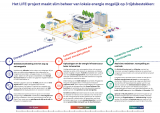
Met het LIFE project in Amsterdam Zuidoost zijn we bezig met een eindconferentie te organiseren op 4 maart middag (13u-17.30) bij de Johan Cruijff Arena en je bent uiteraard van harte welkom (net als je collega's)!
Hieronder de aanmeld pagina met de programma:
[https://www.eventbrite.nl/e/tickets-eindconferentie-life-project-1206732572609](https://www.eventbrite.nl/e/tickets-eindconferentie-life-project-1206732572609 "https://www.eventbrite.nl/e/tickets-eindconferentie-life-project-1206732572609")
Het conferentie gaat over de bijdrage van het LIFE project om innovaties te realiseren om netcongestie te beheren op gebiedsniveau, <strong>in samenwerking met Alliander, Johan Cruijff Arena, Gemeente Amsterdam, TU Delft, Spectral, AMS Institute en andere tech en kennis partners</strong>. Er komen ook inspirerende keynote sprekers om de context te laten zien waarin het project opereert:
- Bart van der Laan, Programmamanager Flexibel Energiegebruik, Alliander
- Ellen Nieuwboer, Projectdirectuer gebiedsontwikkeling, Gemeente Amsterdam
- Roland Lazet (ING) & Andro Bottse (Green Business Club Zuidoost), EnergyHub Arenapoort Taskforce
Samen kijken we naar hoe de onderzoek en tools van LIFE wordt toegepast in Amsterdam Zuidoost om netcongestie op een inclusief en collectief manier te kunnen beheren.
Tot 4 maart bij de Arena!
Project Team LIFE
𝗛𝗼𝘄 𝗰𝗮𝗻 𝗖𝗦𝗥𝗗 𝗯𝗲 𝘁𝗵𝗲 𝗹𝗮𝘂𝗻𝗰𝗵𝗽𝗮𝗱 for 𝘆𝗼𝘂𝗿 𝘀𝘂𝘀𝘁𝗮𝗶𝗻𝗮𝗯𝗶𝗹𝗶𝘁𝘆 𝗷𝗼𝘂𝗿𝗻𝗲𝘆?
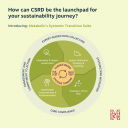
A systems approach is key.
Climate transition plans that lack a systemic perspective can unintentionally shift risks, disrupt supply chains, harm human rights, or even contribute to biodiversity loss. For example, switching to a low-carbon product that requires three times more land may address your carbon goals, but jeopardize your biodiversity targets.
Without considering these interdependencies, your climate strategy may become inefficient and require reworking as new issues arise.
𝗧𝗵𝗲 𝘀𝘆𝘀𝘁𝗲𝗺𝗶𝗰 𝘀𝗰𝗲𝗻𝗮𝗿𝗶𝗼👇
By addressing root causes and considering the ripple effects of climate decision-making in other areas, a systems lens ensures your plan goes beyond regulatory box-ticking.
Together, we can co-create effective action plans with your stakeholders and develop customized decision-making frameworks, accounting for material impacts on climate, nature, and people across your operations and value chain.
How? Learn how our Systemic Transition Suite can unlock your business’s full potential ⬇️
#BeyondCompliance #climatetransition #sustainabilityreporting #CSRD #ESG #circulareconomy
Uitnodiging ontbijtsessie Rechtvaardige Energietransitie

Op donderdag 7 november organiseert ImpactCityImpactCity wederom een van de belangrijkste Europese impactevenementen in onze eigen stad Den Haag. Dit jaar staat energietransitie als één van de vijf thema’s centraal tijdens ImpactFest. Als partner van ImpactCity organiseren wij, samen met de number 5 foundationnumber 5 foundation, een ontbijtsessie als officieel side event van ImpactFest, over dit thema. De sessie is toegankelijk voor iedereen, of je nu wel of geen kaartje hebt voor ImpactFest, omdat wij geloven dat door het samenbrengen van mensen uit verschillende hoeken van de samenleving er (meer) rechtvaardige oplossingen ontstaan.
In de energietransitie ligt de focus vaak bij technische oplossingen om de overstap te maken van fossiele brandstoffen naar duurzame energie. Zonne-energie, windenergie, waterkracht: het zijn belangrijke innovaties, maar de energietransitie is breder dan dat. We zien een enorme ambitie van beleidsmakers en bedrijven om de energietransitie te versnellen. Maar ook een groeiende kloof tussen die ambities en de ervaringen van mensen die geen of beperkte toegang hebben tot deze ontwikkelingen. Dé inwoner bestaat niet, maar bij hen komen wel alle thema's samen en dat biedt de kansen voor versnelling. Om bruggen te bouwen is het belangrijk om te begrijpen wat er in de praktijk speelt, wat de achterliggende oorzaken zijn en waar kansen liggen. Alleen samen kunnen we werken aan een rechtvaardige energietransitie.
De number 5 foundation bracht hierover in 2023 de publicatie Onzichtbare bruggen: kansen voor een (meer) rechtvaardige energietransitie. De eerste kans die hierin naar voren kwam was: creëer structureel ruimte voor dialoog. Om hieraan bij te dragen brengen we op 7 november een diverse groep gamechangers samen – mensen zoals jij, die vanuit verschillende achtergronden en sectoren willen bijdragen aan een rechtvaardige energietransitie. Of je nu actief bent in het bedrijfsleven, de wetenschap, de overheid, een NGO of persoonlijke ervaring hebt met dit thema: jouw perspectief is van grote waarde.
We trappen de ochtend af met inspirerende verhalen van gamechangers uit de praktijk: zoals Sabrina en Marianne van de Verbindingskamer met wie onze collega Kelly samenwerkte aan de gebiedsaanpak aardgasvrij in de Rotterdamse wijk Bospolder-Tussendijken om maatschappelijke koppelkansen in de energietransitie te creëren. Daarna verkennen en delen we ervaringen en dilemma's rondom wat het betekent om een gamechanger te zijn in deze transitie.
Het doel van de sessie is dan ook de dialoog zelf: het ontdekken van waardevolle, onverwachte inzichten die jou verder kunnen brengen in deze transitie. Want: in de huidige maatschappelijke en ecologische transities hebben we leiders nodig die durven te denken en doen vanuit nieuwsgierigheid, compassie en moed! Die buiten bestaande conventies denken, en nieuwe spelregels creëren die het collectief dienen.
Meld je aan via deze link en begin je dag met een inspirerend gesprek, inclusief een gratis ontbijt!
Datum: 7 november 2024
Tijd: 08.30 – 10.30
Locatie: Apollo 14 – Saturnusstraat 14
We kijken ernaar uit je te verwelkomen!
Netwerkbijeenkomst Positief Energie District in de Tolhuistuin

5 jaar Amsterdam Innovatie Atelier
In Buiksloterham ontwikkelt ATELIER een wijk die meer energie opwekt dan zij verbruikt en worden slimme energietoepassingen in de praktijk gebracht.
Wat komt er allemaal kijken bij het opzetten van een energiegemeenschap, welke mogelijkheden en structuren er nodig zijn voor het actief delen van energie, hoe kunnen batterijen ingezet kunnen worden om netcongestie tegen te gaan, en hoe kan het concept data commons bijdragen aan een duurzame wijkontwikkeling?
In deze bijeenkomst blikken we terug op onze gezamenlijke resultaten en bespreken we de toekomstplannen in samenwerking met het kennisnetwerk Amsterdam InChange.
De dag wordt geopend door de Amsterdamse wethouder Dirk de Jager en georganiseerd door TNO in samenwerking met de Hogeschool van Amsterdam, AMS Institute, Waag Futurelab en gemeente Amsterdam.
Ben jij actief in het veld? Dan ben je van harte welkom en horen we graag jouw reflectie tijdens de kennissessies die zich richten op lokale energiesystemen, energiegemeenschappen, financiering en data delen.
Meld je voor 13 november aan!
Wanneer: 21 november 2024
Waar: Tolhuistuin, IJpromenade 2, Amsterdam
Ga naar de aanmeldpagina voor meer informatie over het programma en de sessies.
Het Amsterdam Innovatie Atelier is onderdeel van het Smart City EU-project ATELIER
Subsidie voor ondernemers om inzicht te krijgen in elektriciteitsverbruik: De SON subsidie van de provincie Noord-Holland

De provincie Noord-Holland heeft opnieuw de subsidieregeling Slimme Oplossingen bij Netcongestie (UVR SON) geopend. Van 1 juli tot 1 oktober 2024 kunnen bedrijven en organisaties subsidie aanvragen om inzicht te krijgen in hun elektriciteitsverbruik. Dit helpt hen om energie te besparen en hun verbruik slimmer te spreiden. De subsidie varieert van € 10.000 tot € 15.000 per aanvraag, met een totaalbudget van € 500.000.
Met deze subsidie kunnen bedrijven en organisaties slimme meet- en sturingssoftware aanschaffen waarmee je inzicht krijgt in je eigen elektriciteitsprofiel. Die meetgegevens kunnen gebruikt worden om elektriciteitsgebruik te verminderen of beter te spreiden over de dag. Lees verder op de websitelink!
Kennisland-podcast #1: geen vernieuwing zonder ongemak

Geen vernieuwing zonder ongemak. Maar durven vernieuwers het ongemak zelf in de bek te kijken? En wat kunnen we daarvan leren? In deze podcastserie ter ere van 25 jaar Kennisland gaan we in gesprek met sociale vernieuwers over scheve machtsverhoudingen, schijnparticipatie, gebrek aan diversiteit, preken voor eigen parochie, haperende verdienmodellen, de paradox van vernieuwing en andere olifanten in de kamer waar wíj het juist wel graag over willen hebben. In deze eerste aflevering gaat Marieke van Doorninck in gesprek met Tofik Dibi.
Eerste gast: Tofik Dibi
Tofik is een Marokkaans-Nederlandse oud-politicus, schrijver, activist en sinds 2018 bestuursadviseur van het stadsdeel Nieuw-West in Amsterdam. Hij richt zich onder andere op het vergroten van kansen van jongeren in grote steden. Tofik staat bekend om zijn gedrevenheid en is niet bang om de knuppel in het hoenderhok te gooien. Regelmatig zorgt hij met scherpe tweets voor reuring op X. Hij is bovendien lid van onze Raad van Advies. Marieke van Doorninck, directeur van Kennisland, gaat met hem in gesprek over ongemak en vernieuwing.
> “De realiteit vraagt soms om een bittere toon.”
Ongemak inzetten en toch verbinden
Ze praten over hoe je ongemak kunt inzetten om de status quo te bevragen en de gevestigde orde uit te dagen. Belangrijk daarbij is om tegelijkertijd comfort te bieden. Ongemak werkt het beste in een veilige setting. Hoe kun je de confrontatie aangaan zonder de ander te verliezen?
Luister de podcast (28 minuten) via onderstaande link.
Miniconferentie Power to the People: Energiedelen in je buurt!

Twee projecten binnen één energiegemeenschap op het Amsterdamse Sporenburgeiland: FlexCity en FlexPower.
FlexPower stuurt de publieke laadpalen aan, FlexCity het verbruik bij mensen thuis. Bewoners wisselen onderling elektriciteit uit via een lokale energiecoöperatie in oprichting.
In het eerste deel praten we met de ‘professionals’, en in het tweede deel met professionals en de échte stakeholders: de buurtbewoners uit Sporenburg. Om 17:00 uur netwerkborrel!
Aanmelden, ga naar: https://resourcefully.nl/#nieuws
Demoday #23: Co-creating with residents in the heat transition
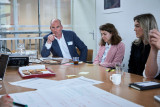
The heat transition is in full swing. Municipalities want their residents off the gas and want them to switch to renewable sources of heat. Unfortunately, heat grids have often led to frustrated residents. Which in turn has led to delayed or cancelled plans for the municipality.
Dave van Loon and Marieke van Doorninck (Kennisland) have looked into the problems surrounding heat grids and came up with a plan. In this Demoday work-session we dived into the problems surrounding heat grids and their plan to solve them. The session was moderated by our own Leonie van Beuken.
Why residents get frustrated with heat grid plans
Involving residents in the planning of a heat grid is difficult. It takes a lot of time and effort and the municipality is often in a hurry. This is why they choose for a compromise in which they already make the plan, but try to involve citizens at the end part. However, this leads to residents not having anything to say in the plans. They can block the plans, but they can’t really make changes. This leads to a lot of dissatisfaction.
This top-down approach doesn't seem to be ideal for involving residents in the heat transition. That's why Kennisland is working on developing a plan for early collaboration with residents in the heat transition of neighbourhoods, with a focus on connecting with the community's concerns.
They have seen that this kind of approach can be successful by looking at the K-buurt in Amsterdam-Zuid-Oost. In the initial stages, the first plan for the K-buurt didn't gain much traction. However, when they shifted towards a more collaborative approach, people felt empowered to engage, leading to a more meaningful participation process. Instead of traditional town hall meetings, discussions took place in community spaces like the local barber shop. This shift towards genuine participation and co-creation has resulted in a much-improved end product, one that residents truly support and believe in.
The plan for co-creation in the heat transition
The plan that Kennisland came up with consists of a few key points that are necessary for success:
• Engage with residents early on in the process.
• Also consider other issues in the neighbourhood. There might be more pressing concerns for the residents themselves.
• Ensure accessibility for everyone to participate.
• Truly collaborate on developing a list of requirements.
• Harness creativity.
• Work in a less compartmentalized manner.
They aim to form a neighbourhood alliance and organize a community council. Together a plan can be made for the neighbourhood that all residents can get behind.
This plan might take a bit longer at the start, but that investment in time will pay itself back in the end.
SWOT analysis of co-creation plan
After Dave and Marieke explained their plan we did a SWOT analysis with the group. We looked at the Strengths, Weaknesses, Opportunities, and Threats of the plan.
The main strength that was pointed out was the ability to make a plan together with the residents. The residents experience the neighbourhood differently than a government official, which makes the final plan more beneficial to everyone.
The weaknesses the group saw in the plan were mainly that this could potentially slow down the process. Should we maybe do less participation instead of more and use force to get this heat transition going?
There were a lot of opportunities identified for this plan. The quality of the plan (and the neighbourhood) can greatly increase. By slowing down at the start we can actually accelerate and improve the neighbourhood on many levels. This plan also offers a great learning experience.
Finally, we went into the threats. One of the big threats that was pointed out was the lack of trust. If residents don’t trust the municipality and the process then it will never be possible to let this plan succeed. The explanation to residents also needs to be understandable. The explanation around a heat grid can get technical very quickly, and residents often don’t have the background to understand everything. The last threat that was pointed out was that if you get a lot of input from the residents for the plan, you also have to do something with that, and still be realistic. You have to work hard to manage expectations.
We completed the session by asking the participants if they knew any partners and places to collaborate with for this plan, or if they had any other ideas to make this plan successful.
We would now like to ask the same questions to you! Do you know someone who would like to partner up with Kennisland, do you know a place where this plan can be tested, or do you have any other ideas? Let us know by contacting me at noor@amsterdamsmartcity.com.
Supporting Sustainable Technology Education Through E-Waste Recycling
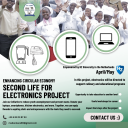
🌍✨ Join Us in Making a Difference! ✨🌍
We're excited to launch a groundbreaking project aimed at transforming e-waste into educational opportunities! 🚀📚 As part of our commitment to sustainability and digital literacy, we're collecting smartphones, laptops, and other electronics to support vibrant educational workshops in Rwanda.
Why join us? By participating, you'll:
- 🌱 Support environmental sustainability by helping reduce e-waste.
- 📖 Contribute to enhancing digital literacy among underserved communities.
- 🤝 Be part of a global movement advocating for responsible technology use.
- 🎓 Help provide essential skills that can transform lives and foster long-term growth.
We're looking for individuals and organizations to donate devices, share expertise, or sponsor our efforts. Every contribution makes a real difference, and together, we can create a more sustainable and inclusive future. 🌟
Let's reshape the future, one device at a time. Join us in this exciting journey and be credited in our upcoming documentary that highlights the collective efforts of our incredible partners from Germany, Latvia, and the Netherlands. 🎥🌍
CONTACT US THROUGH EMAIL - madaralace1999@gmail.com
Revolutionise Recycling, Redefine Wealth: Seize the Opportunity with ByeBye Bed Limited and Reborn Products!

Greetings Trailblazing Visionaries,
Get ready for a seismic shift in sustainability! We're ByeBye Bed Limited, a force of innovation since 2019, experiencing a staggering 900% growth, and now we're inviting you to be part of our electrifying journey - Reborn Products.
The Powerhouse Behind ByeBye Bed Limited: Meet Paul Beckett, the maverick entrepreneur who saw a goldmine in recycling. His vision isn’t just about mattresses; it’s about transforming waste into a treasure trove of sustainable, retail-worthy products. The world is ready for this revolution, and we're leading the charge.
Dazzling Growth, Unstoppable Momentum: From a modest 6,000 sq. ft. to our current 60,000 sq. ft. facility, we've supersized our operation to revolutionise recycling on a grand scale. Brace yourself for a dedicated manufacturing facility that will catapult our capabilities into the stratosphere.
Reborn Products: Where Sustainability Meets Luxury: Our 'Reborn' products aren't just eco-friendly; they're a testament to style, comfort, and sustainability. From avant-garde mattresses to chic futon chairs and everything in between, we’re turning waste into opulence. Currently, 96% of our materials are recycled, making us the pinnacle of green innovation.
Crushing the Landfill Crisis: We're not just talking the talk; we're walking it, stomping on the UK landfill crisis that swallows almost 5,000,000 mattresses each year. We're not just recycling; we're redefining waste, turning it into a jaw-dropping spectacle of sustainability.
Financial Dynamo: Fueling the Future: Hold on tight because the next phase is a financial thunderstorm. We're not just enhancing the use of our recycled materials; we're rewriting the rules of industry, starting with furniture making. Imagine a world where our waste stream becomes the lifeblood of innovation.
Revolutionary Padding Material: Unleashing the Future: Introducing our game-changing padding material, birthed from our waste streams. It's not just 100% recyclable; it's a disruptor, challenging the status quo and reshaping the very fabric of eco-friendly living.
Invest in Tomorrow: ByeBye Bed Limited is the Future: This isn’t just a crowdfunding opportunity; it’s your ticket to invest in the future of sustainability. Join the movement, fuel the revolution, and be part of a success story that will be told for generations.
Social Impact: Building Lives, Breaking Chains: But wait, there's more! Our initiative with HMP isn’t just about recycling materials; it's about recycling lives. We're rehabilitating prisoners, re-skilling them for a triumphant return to society. And the best part? They potentially become integral members of our powerhouse workforce.
Your Invitation to Greatness: Investing in ByeBye Bed Limited and Reborn Products isn’t just about returns; it’s about being part of a seismic shift. This is your opportunity to be on the ground floor of something monumental.
Interested in More Details? Ignite the Revolution - Join Us Now: Email us for more details and become part of a future where recycling isn’t just responsible; it’s a lifestyle. Let's redefine waste, together.
Thank you for daring to dream big with ByeBye Bed Limited and Reborn Products.
Demoday #22: How can we continue to facilitate homeowners in driving the energy transition?
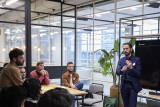
Grid congestion is becoming increasingly significant and will start to pose a problem in the low-voltage network in the coming years. This will prevent homeowners from transitioning away from gas, result in low efficiency for their solar panels, and could make it impossible to have a charging station at their doorstep. Alliander does not want to hinder the energy transition. Therefore, they are looking for a way to involve homeowners in the issue of grid congestion and provide solutions that are still feasible with a crowded grid.
In the energy work session on the 14th of December, Wouter van Rooijen (Alliander) discussed the challenges related to grid congestion. From 2030 onwards, it is expected that a significant portion of the low-voltage network will experience both over- and under-voltage. While the network will be reinforced as quickly as possible, the lack of labour capacity is also prompting the consideration of alternative solutions.
The solution that emerged from Wouter's co-creation process was WijkWise. In this work session, Wouter aimed to validate the WijkWise concept and find parties that could contribute to its development and market implementation. Dave van Loon from Kennisland moderated the session.
WijkWise – Understanding the neighbourhood's grid situation
The WijkWise concept focuses on three problems:
- The growth of grid congestion at low-voltage
- Homeowners' uncertainty about making sustainable investments. For instance, because they may not know if their solar panels will yield a good return.
- Homeowners' lack of awareness regarding the impact their choices have on the stability of the grid.
The proposed solution:
"With WijkWise, Alliander continues to facilitate homeowners in making their homes more sustainable. Alliander does this by providing insight into the neighbourhood's grid situation and recommending the best investment. Residents can make informed choices that contribute to payback time, comfort, and certainty. A good choice benefits both the homeowner and the grid operator."
The idea is to provide more insight into the neighbourhood's grid situation and offer tailored advice for home sustainability. This way, homeowners can determine whether they should invest in insulation, a heat pump, or solar panels.
Alliander does not want to develop this concept alone, but is seeking partners to bring this concept to market.
Discussion
After the concept presentation, a brief discussion followed. The main questions raised were:
- Can providing insight into the neighbourhood's grid situation have (negative) effects on the housing market?
→ They don't know yet; further investigation is needed. - Can this data be shared freely?
→ The data shared will be at the neighbourhood level (transformer level) and not in real-time (monthly). If there is user data involved, consent must be obtained. - What behaviour change do you expect?
→ That, during the investment moment, consideration will be given to the grid situation for the most advantageous investment.
After the discussion, we worked in groups with the Empathy Canvas from Kennisland to view the WijkWise concept from the perspective of the homeowners. This tool helped us really view the problems from the perspective of a homeowner.
Empathy Mapping
In three groups, we delved into the homeowner's situation. The recurring themes in the empathy maps were:
- A sense of unfairness for the homeowner. They invest in sustainability and are rewarded with grid congestion problems.
- A feeling of uncertainty for the homeowner. They want assurance that their investment will yield results.
- Little trust in the grid operator and the government. First, everyone had to get solar panels, and now suddenly it doesn't fit, and net metering is being discontinued (or not?)
- Limited understanding by homeowners because they find it very complicated and don't want to delve into it. It's not an urgent problem for them.
- Collaboratively seeking solutions can be very positive, but can also lead to friction.
Alliander plans to take the next steps with this concept in 2024. In 2024, they are planning to do the follow-up research, make the minimal viable product, and launch the first version of the product at the end of the year.
Do you know of any stakeholders that absolutely need to be involved, or would you like to be involved in the implementation of the WijkWise concept? Please contact Noor at noor@amsterdamsmartcity.com. Special thanks to Wouter and Dave for this interesting session.
Kl Brouwerij #3: Klimaateerlijkheid

Kom op 29 november naar de KL Brouwerij, laat je inspireren door het theaterstuk ‘De zaak Shell’ en ontrafel samen met ons – midden in de buurt – de wirwar aan verantwoordelijkheden bij het aanpakken van de klimaatcrisis.
Een aantal keer per jaar organiseert Kennisland de KL Brouwerij. Dan laten we ons werk even voor wat het is en brouwen we samen nieuwe ideeën voor maatschappelijke uitdagingen. We brengen leven in de brouwerij door te ontdekken, smeden, broeden, fantaseren en borrelen. Dit doen we met partners, experts, ervaringsdeskundigen en betrokkenen bij het vraagstuk dat centraal staat, en waar we meer over willen leren. De derde KL Brouwerij staat in het teken van de klimaatrechtvaardige samenleving: hoe zorgen we ervoor dat iedereen op een eerlijke manier verantwoordelijkheid neemt in het aanpakken van de klimaatcrisis?
Hoe ziet een klimaatrechtvaardige samenleving eruit?
De klimaatcrisis is niet eerlijk. Rijke mensen, bedrijven en landen veroorzaken de meeste schade, terwijl vooral arme mensen de gevolgen voelen. Als we de klimaatcrisis willen stoppen, moeten we deze cirkel doorbreken. Maar wiens verantwoordelijkheid is dat eigenlijk en wie is er het eerst aan zet? De consument die zijn eigen klimaatvoetafdruk moet verkleinen? Vervuilende bedrijven die steeds meer winst maken en ondertussen profiteren van fossiele subsidies? Of de overheid die met wetten, regels en beleid belangrijke koerswijzigingen kan realiseren, maar dat te weinig doet? Tijdens deze KL Brouwerij ontrafelen we samen die wirwar. Dat doen we met theater, inspirerende buurtinitiatieven en vooral veel ruimte voor uitwisseling en gesprek.
De zaak Shell
We starten met live theater uit het prijswinnende stuk De zaak Shell. Regisseurs Anoek Nuyens en Rebekka de Wit bezochten Shells aandeelhoudersvergaderingen, ploegden door beleidsnota’s van de overheid en schreven mee met opmerkingen van familieleden aan het kerstdiner. In dit stuk komen alle stemmen in het klimaatdebat samen en zien we hoe elke partij de verantwoordelijkheid naar de ander doorschuift.
Klimaatrechtvaardigheid in de wijk
Na het theaterstuk brengen we dit gigantische onderwerp terug tot het niveau van de wijk. Hoe kunnen we ervoor zorgen dat de klimaatmaatregelen in wijken op een rechtvaardige manier vorm krijgen? We verhuizen voor deze editie van de KL Brouwerij naar buurthuis De Witte Boei, in het hart van de Oostelijke Eilanden, niet ver van het Marineterrein, midden in de buurt.
Kom ook en praat mee!
Deze KL Brouwerij vindt plaats op woensdag 29 november van 16.30-18.30 uur in buurthuis De Witte Boei op Kleine Wittenburgerstraat 201 in Amsterdam. Er is een beperkt aantal plaatsen, dus meld je snel aan via onderstaande link! Stuur voor vragen een mailtje naar Nina Sandford via ns@kl.nl.
Expeditie Muziek

Ik heb de laatste jaren honderden posts geschreven over stedelijke ontwikkeling, innovatie en organisatie. Vele daarvan hebben op deze website gestaan. Ik verschuif mijn schrijfactiviteiten geleidelijk naar het thema waarvan mijn hart sneller gaat kloppen, namelijk muziek. In mijn nieuwe Nederlandstalige blog 'Expeditie muziek' (zie de link hieronder) verken ik wekelijk een ander facet. Deze week is dat de geschiedenis van de blues, vorige week heb ik een top tien samengesteld van de in mijn ogen mooiste Nederlandstalige liedjes 'ooit'. Neem eens een kijkje.
Technologies that allow for looking underground without digging

The ground is full of cables, pipes, and other assets but we don’t always know exactly where they are located. Digging is the most common practice to look for assets, however, this has many negative impacts. It can lead to damage to assets, it costs time and money to dig, and it is often an inconvenience to the direct surroundings.
Therefore, it would be extremely convenient if we could find methods to locate assets without having to dig. We are looking for start-ups, research groups, and knowledge institutions that have developed or can develop a technology that can scan, detect, or sense, underground assets without digging.
Are you the person we are looking for, or do you know the person or organisation we are looking for? Please let us know by sending a message to noor@amsterdamsmartcity.com or leaving a comment below.
Smart Energy Community - Elaad Testlab - Arnhem

Op 31 oktober organiseren FAN en TKI Urban Energy de tweede fysieke netwerkbijeenkomst van de Smart Energy Community, in het testlab van ElaadNL, Arnhem, met als onderwerp:
Domotica en Home Energy Management Systems in de praktijk
Eindgebruikers aan het woord
Hoe weerbarstig is de praktijk? Sommige eindgebruikers zijn zelf al aan de slag gegaan met domotica om hun energiegebruik slim aan te sturen. Wij laten drie van deze enthousiastelingen aan het woord: Jan Kerdel, Michiel Damoiseaux & Harm van den Brink. Wat zijn hun ervaringen? Waar liepen ze tegenaan?
Setting the scene: HEMS & Domotica
Jasmijn Kleij van TKI Urban Energy gaat in op de vraag of Domotica ook kansen op voor slim energiemanagement biedt, of dat het nu nog vooral een oplossing voor de enthousiaste knutselaars.
Praktische lessen uit Belgie
Giovanni Oorthuizen van Xemex zal een presentatie geven over de nieuwe wet- en regelgeving in België, hoe zij daarop inspelen met energiediensten, en hun ervaringen met eindgebruikers.
En verder
* Paneldiscussie over Domotica, energiemanagement en de rol van de eindgebruiker
* Speeddaten & netwerken
Aanmelden
https://www.aanmelder.nl/smartenergyday/subscribe
Volledige programma ochtendsessie:
https://www.aanmelder.nl/smartenergyday/wiki/924116/ochtendprogramma
Volledige programma middagsessie: 'Smart Energy Day 2.0', georganiseerd door TKI Urban Energy, Dutch Power, Connectr, RVO en ElaadNL
https://www.aanmelder.nl/smartenergyday/part_program
Smart Energy Community - Elaad Testlab - Arnhem

Op 31 oktober organiseren FAN en TKI Urban Energy de tweede fysieke netwerkbijeenkomst van de Smart Energy Community, in het testlab van ElaadNL, Arnhem, met als onderwerp:
Domotica en Home Energy Management Systems in de praktijk
Eindgebruikers aan het woord
Hoe weerbarstig is de praktijk? Sommige eindgebruikers zijn zelf al aan de slag gegaan met domotica om hun energiegebruik slim aan te sturen. Wij laten drie van deze enthousiastelingen aan het woord: Jan Kerdel, Michiel Damoiseaux & Harm van den Brink. Wat zijn hun ervaringen? Waar liepen ze tegenaan?
Setting the scene: HEMS & Domotica
Jasmijn Kleij van TKI Urban Energy gaat in op de vraag of Domotica ook kansen op voor slim energiemanagement biedt, of dat het nu nog vooral een oplossing voor de enthousiaste knutselaars.
Praktische lessen uit Belgie
Giovanni Oorthuizen van Xemex zal een presentatie geven over de nieuwe wet- en regelgeving in België, hoe zij daarop inspelen met energiediensten, en hun ervaringen met eindgebruikers.
En verder
* Paneldiscussie over Domotica, energiemanagement en de rol van de eindgebruiker
* Speeddaten & netwerken
Aanmelden
https://www.aanmelder.nl/smartenergyday/subscribe
Volledige programma ochtendsessie:
https://www.aanmelder.nl/smartenergyday/wiki/924116/ochtendprogramma
Volledige programma middagsessie: 'Smart Energy Day 2.0', georganiseerd door TKI Urban Energy, Dutch Power, Connectr, RVO en ElaadNL
https://www.aanmelder.nl/smartenergyday/part_program
ATELIER - Positive Energy Districts

ATELIER is an EU funded project about AmsTErdam and BiLbao cItizen drivEn smaRt cities, aiming to create and replicate Positive Energy Districts (PEDs) within eight European cities. ATELIER showcases innovative solutions that integrate buildings with smart mobility and technologies to create rather than consume energy in its two Lighthouse Cities Amsterdam (Netherlands) and Bilbao (Spain). The Fellow Cities of ATELIER, Bratislava (Slovak Republic), Budapest (Hungary), Copenhagen (Denmark), Krakow (Poland), Matosinhos (Portugal), and Riga (Latvia), will replicate and adapt the successfully implemented solutions and thus serve as testbeds for future smart cities. Overall, ATELIER will thus generate an energy surplus of 1340 MWh of primary energy and save 1,7 kt of CO2 and 23 t of NOx-emissions.
To achieve successful implementations of energy saving measures, ATELIER puts citizens at the centre of all its activities: residents (<9000), local initiatives and energy communities will be included in decision-making processes and activities and will be strongly engaged in the development of the technical solutions throughout the project. Citizens will be involved in the Innovation Ateliers to create a maximum impact for the PEDs.
30 partners from 11 countries are working in 10 work packages.
Learn more about ATELIER at its public website (http://www.smartcity-atelier.eu/) or via the ATELIER Twitter and LinkedIn channels. Sign up here (link follows) for the ATELIER newsletter. Follow the project virtually and don’t miss an opportunity to come talk to its partners at events to learn more about how ATELIER will improve the life of its citizens and the liveability in its cities!
Matchmaking-evenement Toekomstbestendige kunstgrasvelden
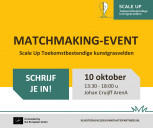
Ben je een ondernemer met een duurzaam product of duurzame dienst en wil je écht impact maken? Dinsdag 10 oktober organiseert de gemeente Amsterdam in samenwerking met gemeente Haarlem het matchmaking-evenement voor het unieke aanbestedingstraject Scale Up Toekomstbestendige kunstgrasvelden. Elke ondernemer die bij kan dragen aan innovatieve en duurzame toepassingen op en onder kunstgrasvelden, is welkom!
Tijdens deze middag maak je kennis met het project 'Scale Up Toekomstbestendige Kunstgrasvelden' en word je geïnspireerd en uitgedaagd hoe jouw bedrijf bij kan dragen aan deze revolutie. Je ontmoet andere waardevolle en gedreven ondernemers met dezelfde visie, die bereid zijn samen te werken aan de toekomst van sportvelden. Wie weet vind jij wel de perfecte samenwerkingspartner! Meld je direct aan.
Datum: dinsdag 10 oktober 2023
Tijd: 13.30 – 18.00 uur
Locatie: Johan Cruijff ArenA, Amsterdam
Programma
13.30 - 14.00 Inloop
14.00 - 14.45 Welkom en keynote spreker
14.45 - 15.30 Presentatie Scale Up aanbesteding
15.30 - 15.50 Pauze
15.50 - 17.30 Speeddating & marktplein
17.30 - 18.00 Netwerkborrel
Wie zoeken ze?
Amsterdam en Haarlem zoeken verschillende partijen, die samen (in consortia), innovatieve oplossingen ontwikkelen voor de verschillende ambities. Het doel: duurzame kunstgrasvelden van circulaire materialen, die bijdragen aan een verbeterde waterhuishouding, een betere aanpak van hittestress en een algemene positieve bijdrage aan het energievraagstuk. Denk bijvoorbeeld aan een systeem voor wateropslag of composteerbare materialen. Dus ook voor bedrijven en innovators die momenteel niet actief zijn in de kunstgrasbranche kan deze opgave interessant zijn!
Samen maken we impact
Dat is het motto! Benoemde gemeentes willen, in samenwerking met marktpartijen, een positieve verandering teweegbrengen in de negatieve effecten van kunstgras. En met meer dan 200 sportvelden in Amsterdam en Haarlem, kan er veel impact gemaakt worden bij het verduurzamen van de stad en andere steden.
Lees meer over dit project op: kunstgrasvelden.innovatiepartners.nl
Disclaimer: Het is niet verplicht om deel te nemen aan het matchmaking event om mee te kunnen doen met de aanbesteding. Het project wordt deels gefinancierd door het LIFE Programme van de Europese Unie. De weergegeven standpunten en meningen zijn echter uitsluitend die van de auteur(s) en weerspiegelen niet noodzakelijkerwijs die van de Europese Unie of CINEA. Noch de Europese Unie, noch de subsidieverlenende autoriteit kan hiervoor verantwoordelijk worden gehouden. Aan deze artikelen kunnen geen rechten worden ontleend, de aanbestedingsstukken bij de publicatie van de aanbesteding zijn leidend.
Stay up to date
Get notified about new updates, opportunities or events that match your interests.


